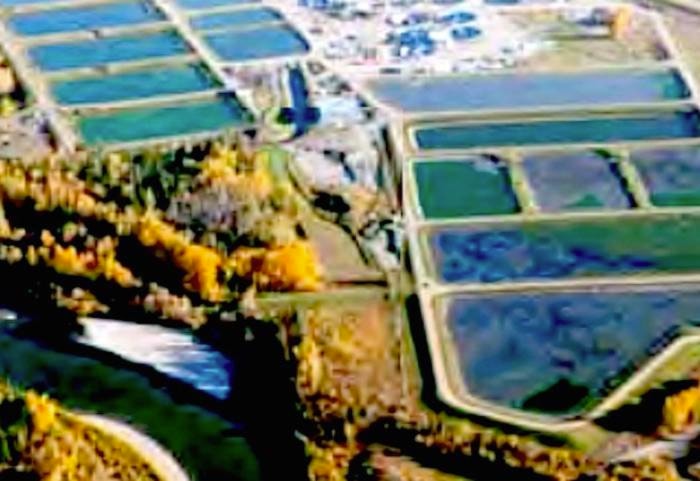Red Deer’s wastewater treatment plant is collecting a higher volume of solid human waste from the region than it can easily handle.
As the city’s sewage lagoons — the size of about six football fields — are quickly filling up with wastewater received from municipal and regional customers, city council approved on Tuesday transferring $550,000 from a reserve fund to pay contractors to spread some of these “biosolids” on farmers’ fields.
This requested amount had inadvertently been left out of the 2021-22 city budget due to an oversight.
Utilities manager Jim Jorgensen said, with an oversurplus of human solid waste to manage, Red Deer has been talking part in the Alberta Environment and Parks-approved “agriculture land application.”
This means that biosolids are being spread on farm fields to reduce fertilizer use, increase the storage of carbon in the soil, “thereby minimizing greenhouse gas (GHG) emissions to the atmosphere,” according to his report.
Council was told that biosolids are stored in settling lagoons at the wastewater treatment plant to thicken until they are ready for application.
Related:
-Human waste ‘backlog’ to be spread on fields
- People poop is being spread on farm fields
To pay for the regular soil spreading, $450,000 was built into the city’s annual operating budget. This is needed to spread about 2,300 and 3,000 dry tonnes of biosolids per year.
But Jorgensen said treatment volumes have increased to about 5,300 dry tonnes of biosolids now produced.
Rather than continuing to provide “one-time” funding adjustments that were granted in 2018 and 2019, council opted to roll future increases into user rates.
Starting in 2022, all users of the Red Deer’s wastewater treatment plant will have to pay 2.9 per cent more for this service. This extra $1.20 a month on the average residential ultility bill will generate, in future, the $550,000 needed yearly to spread sterlized surplus human waste on fields as a fertilizer.
Jorgensen said this will allow space to be freed up in the sewage lagoons for new wastewater from Sylvan Lake, the summer villages, Olds and Bowden, Blackfalds and Lacombe — all are now connected to Red Deer’s wastewater treatment system.
Councillor Vesna Higham asked whether this agricultural spreading will continue in future or whether more infrastructure will eventually be needed to handle it.
Jorgensen responded that all options are being studied for how to deal with the future treatment of biosolids.
lmichelin@reddeeradvocate.com
Like us on Facebook and follow us on Twitter
